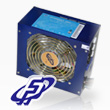| Stability: 12V |
| 12V CPU Loadless | | | 12V Drives Loadless | | | 12V GPU Loadless | | | 12V CPU Low | | | 12V Drives Low | | | 12V GPU Low | | | 12V CPU Mean load (350W) | | | 12V Drives Mean load (350W) | | | 12V GPU Mean load (350W) | | | 12V CPU 100% rail (20A) | | | 12V Drives 100% rail (20A) | | | 12V GPU 100% rail (20A) | | | 12V CPU Full load (800W) | | | 12V Drives Full load (800W) | | | 12V GPU Full load (800W) | | |
| | 0 14 7 | volts |
| |
| Stability: -12V |
| Loadless | | | Low | | | Mean load (350W) | | | Full load (800W) | | |
| | -14 0 -7 | volts |
| |
| Stability: 5V |
| Loadless | | | Low | | | Mean load (350W) | | | 100% rail (30A) | | | Full load (800W) | | |
| | 0 6 3 | volts |
| |
| Stability: 5V Stand-by |
| Loadless | | | Low | | | Mean load (350W) | | | Full load (800W) | | |
| | 0 6 3 | volts |
| |
| Stability: 3.3V |
| Loadless | | | Low | | | Mean load (350W) | | | 100% rail (30A) | | | Full load (800W) | | |
| | 0 4 2 | volts |
| |
Das Netzteil bricht auf der 3.3V-Schiene bei Volllast mit -6.2% deutlich ein. Im unbelasteten Betrieb hingegen liegt diese Spannung um 5.6% zu hoch. Dies sind 1,2% bzw. 0,6% mehr Abweichung als in den ATX Spezifikationen gerade noch toleriert werden. Alle übrigen Spannungen bleiben teils deutlich innerhalb der Toleranz.


